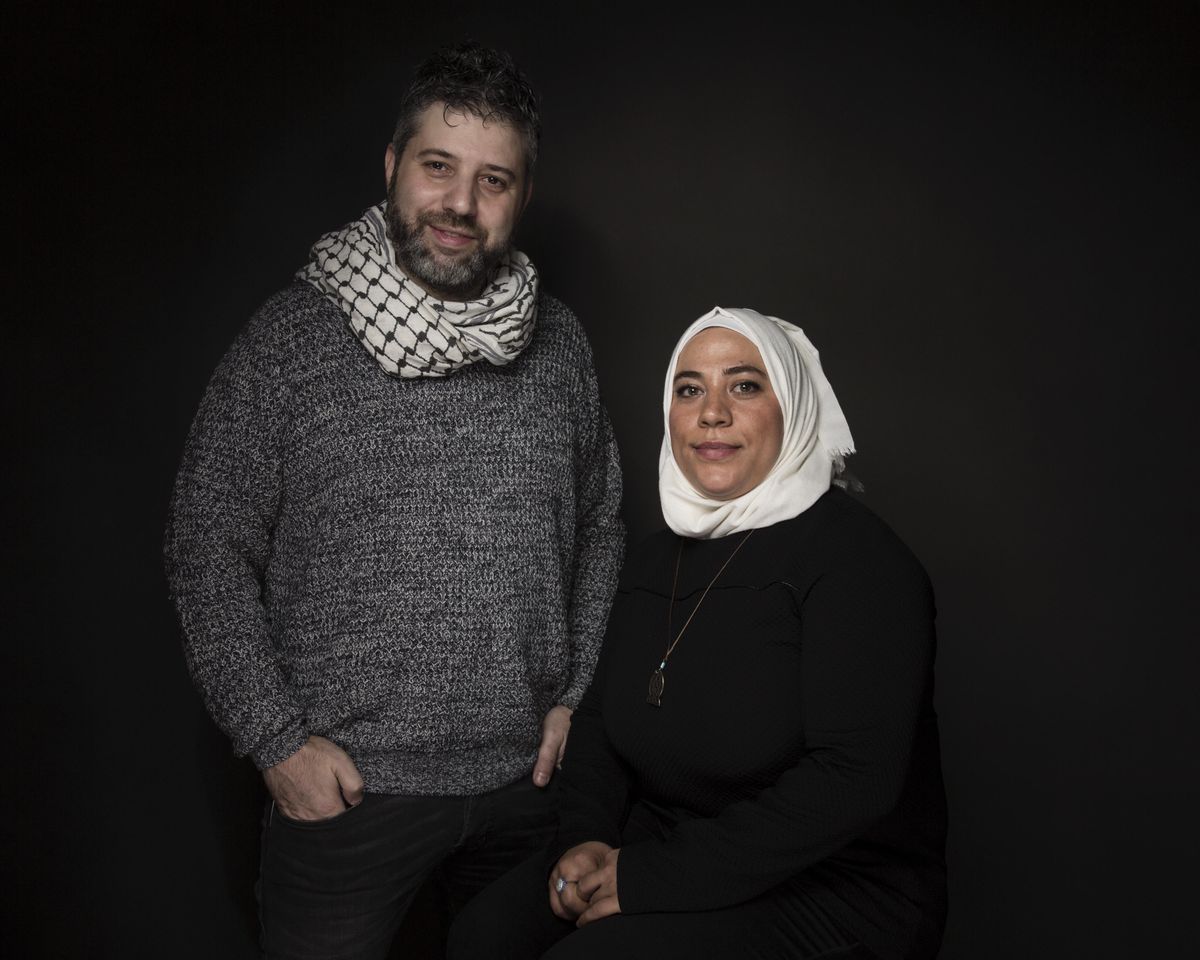‘Cries From Syria’ is an unsparing, must-see documentary

BEIRUT – It has been 18 months since the body of 3-year-old Aylan Kurdi washed up on the shore of Turkey, the premature end of a flight from Syria.
Nilufer Demir’s photo of Kurdi, face down in the morning surf, prompted an outpouring of compassion for refugees around Europe and North America.
Now, voters in developed countries are rewarding candidates for smearing refugee resettlement as a cultural and security threat, despite the overwhelming evidence to the contrary.
Director Evgeny Afineevsky hopes his new documentary, “Cries From Syria,” which premieres at 10 p.m. Monday on HBO, can revive our collective sympathy.
“I tried to show the human side of these people, and their dignity,” he said in an interview from Los Angeles. “Their dignity is the essential thing.”
Its HBO premiere and limited run in Los Angeles and New York movie theaters falls on nearly on the sixth anniversary of Syria’s murderous war, one so brutish, the U.N. has lost count of the death toll. Most estimates put it over 400,000. The government is responsible for the bulk of those fatalities.
“Cries From Syria” is a difficult film that opens with a shot of little Aylan’s body before rewinding to the popular uprising that spiraled into war.
The historical context given is thin, but in broad strokes, is factually correct. The Assad family had ruled Syria with an iron fist for four decades, and cracked down on dissent with militaristic violence. However, those hoping for an in-depth history lesson on how President Bashar Assad managed to maintain an indissoluble core of support within the state’s various security apparatuses and the air force will need to look elsewhere.
Stitching together footage recorded by activists of the events in Syria with moving interviews from people who can only be described as survivors of Assad’s desperation to rule, Afineevsky delivers a wrenching expose of the crackdown that sparked the still-raging war.
A lot of the footage is graphic, and will be unfamiliar to those who have not followed Syria closely. Viewers will gaze on the disfigured corpse of a dead 13-year-old who, by opposition accounts, was kidnapped and tortured to death by the government’s security services in 2011 to make an example out of protesters.
“Without this brutality, you won’t understand why these people are looking for shelter, why the take the boats and head for the seas,” said Afineevsky, whose 2015 “Winter on Fire: Ukraine’s Fight for Freedom” was nominated for an Oscar for best documentary. “You want to feel the same thing that mothers feel, to lose their kids.”
Individual cases are difficult to verify, but prosecutors and human rights watchdogs have accumulated reams of evidence pointing to an industrial scale of torture and extrajudicial killings in the government’s shadowy network of detention centers. They have collected evidence of war crimes by the conflicts other parties, too, though at a smaller scale.
The film moves through the phases of the war, ending with a chapter called “In Between” that returns to the desperate attempts to flee the war. One of them, of course, belongs to Kurdi’s family. The U.N.’s refugee agency says 5 million Syrians – nearly one-quarter of the country’s pre-war population – are refugees. Once citizens, with jobs, belongings, homes, access to education and health care, they are now mired in the camps and the ghettos of Syria’s neighbors. They are stateless, and they need onward passage to rich, developed nations, for the sake of their children’s futures if for nothing else.
But the nature of the subject matter means the film will doubtless raise other questions, as well, chief among them: What could the U.S. and Europe have done? What can they still do?
In one of the final clips of the film, Kholoud Helmi, 33, who earlier described the uprising in the most romantic terms, tells viewers she doesn’t know what she wishes for anymore. What she wants most dearly – a brother who was disappeared by the security forces – can never be returned.
It is to Afineevsky’s credit that he leaves these questions unanswered. The truth is, Syria’s future is dark, and any accounting for the realities today reveals there is little room for hope.
At its core, “Cries For Syria” is unsparing. But whether it will move American and European viewers to rethink their posture toward refugees is anyone’s guess. History suggests that feelings of collective generosity are ephemeral.